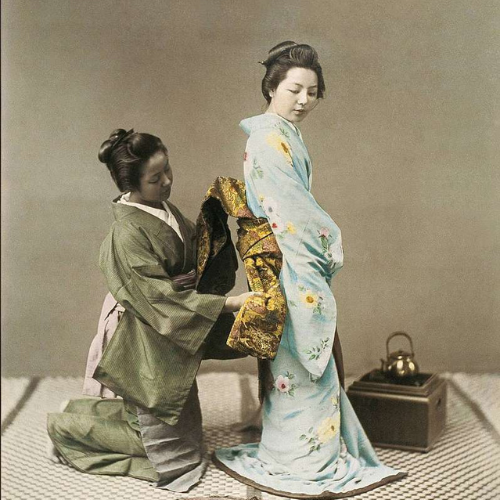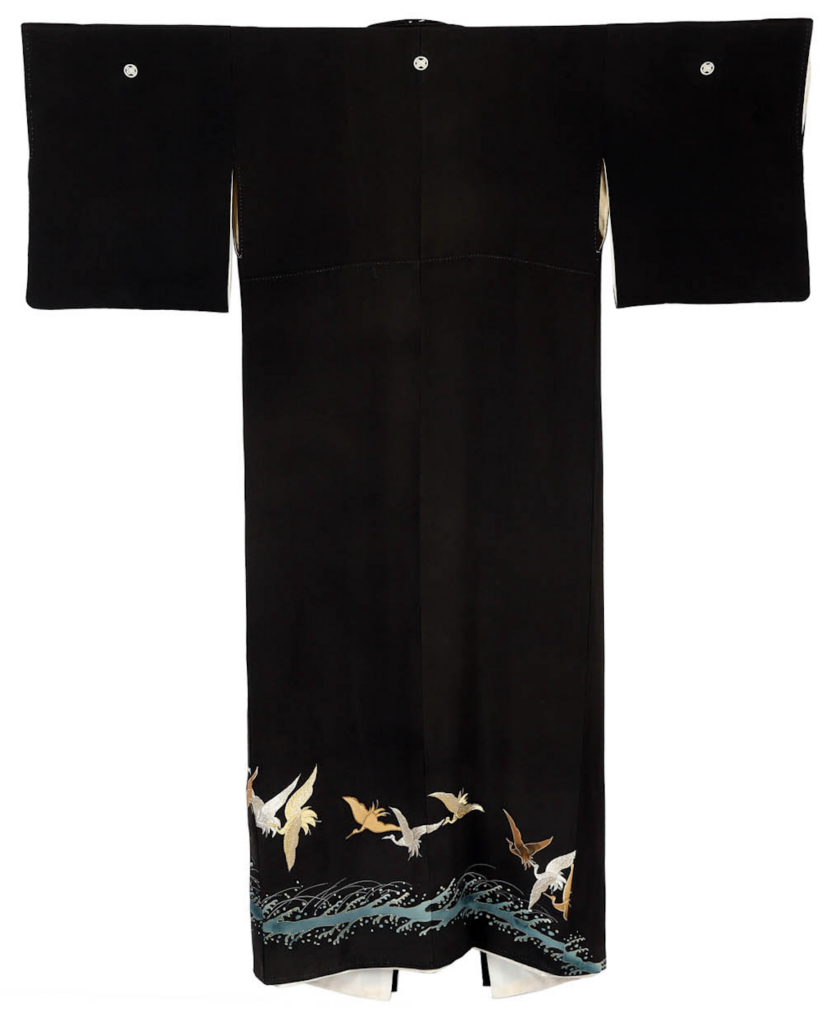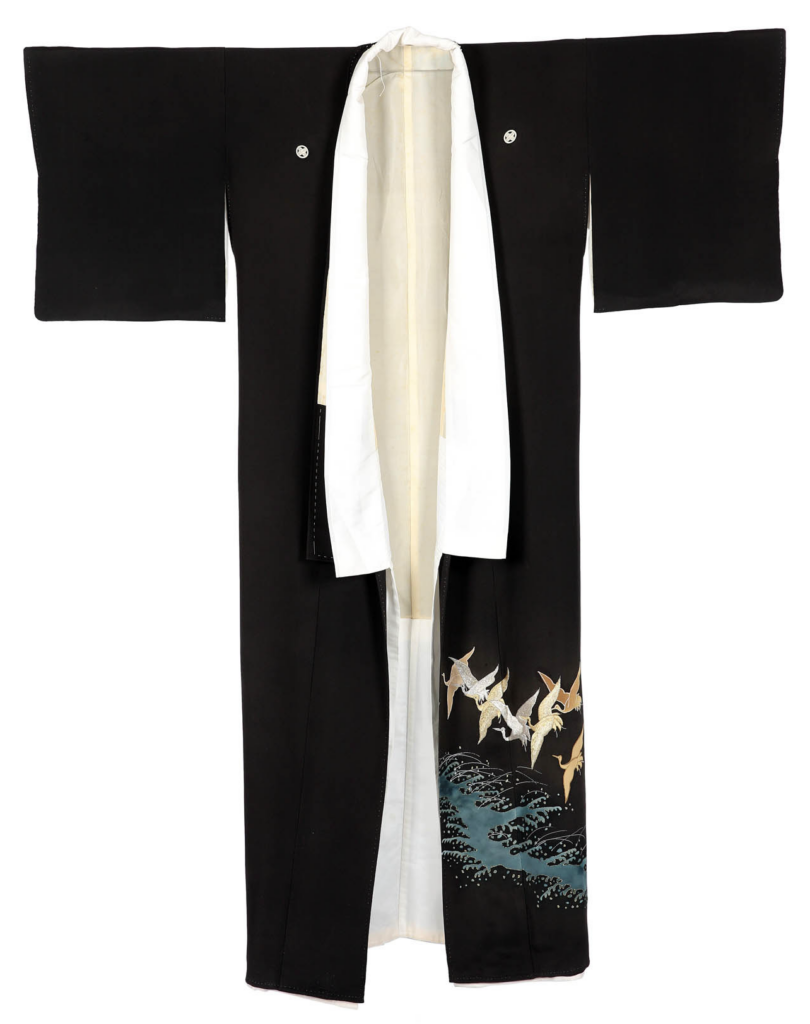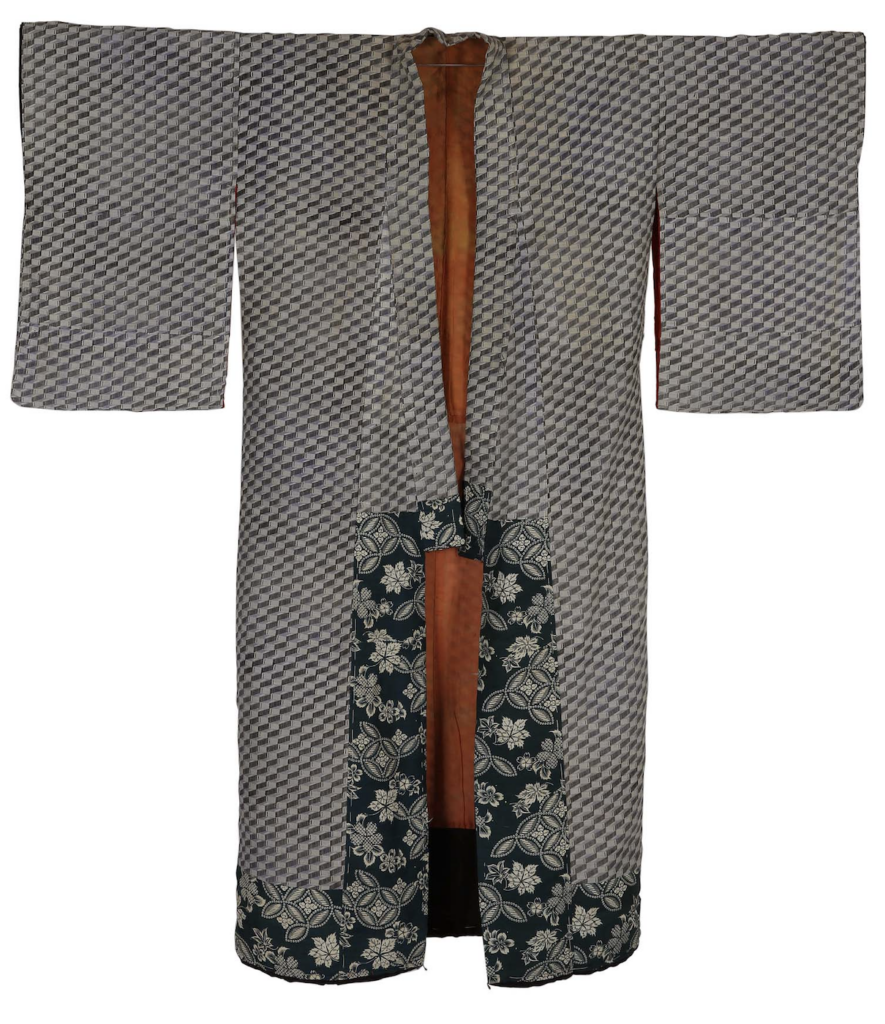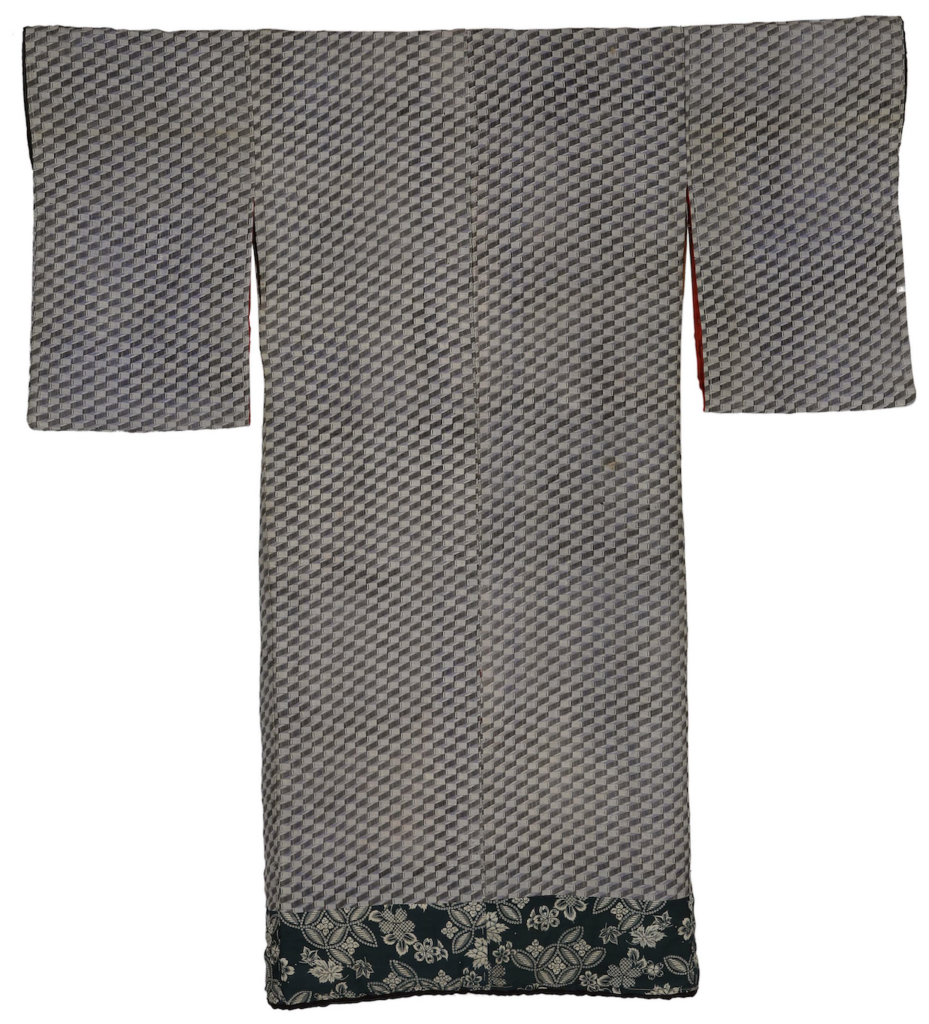Front and back of a yosegire style
kimono
Kimono: (Japanese: ki : wearing, mono: thing, Singular: Kimono) A traditional Japanese long loose robe with wide sleeves tied with a sash around the waist. Presently it is the national dress of Japan. ; “Silk and cotton patchwork women’s robe”, c. 19th -20th century, Japan; Acc No: ZI2017.500837 ASIA, The
Zay
Zay: (Arabic: costume, Pl. azyaā’), a set of clothes in a style typical of a particular country or historical period. Initiative,
LINK




